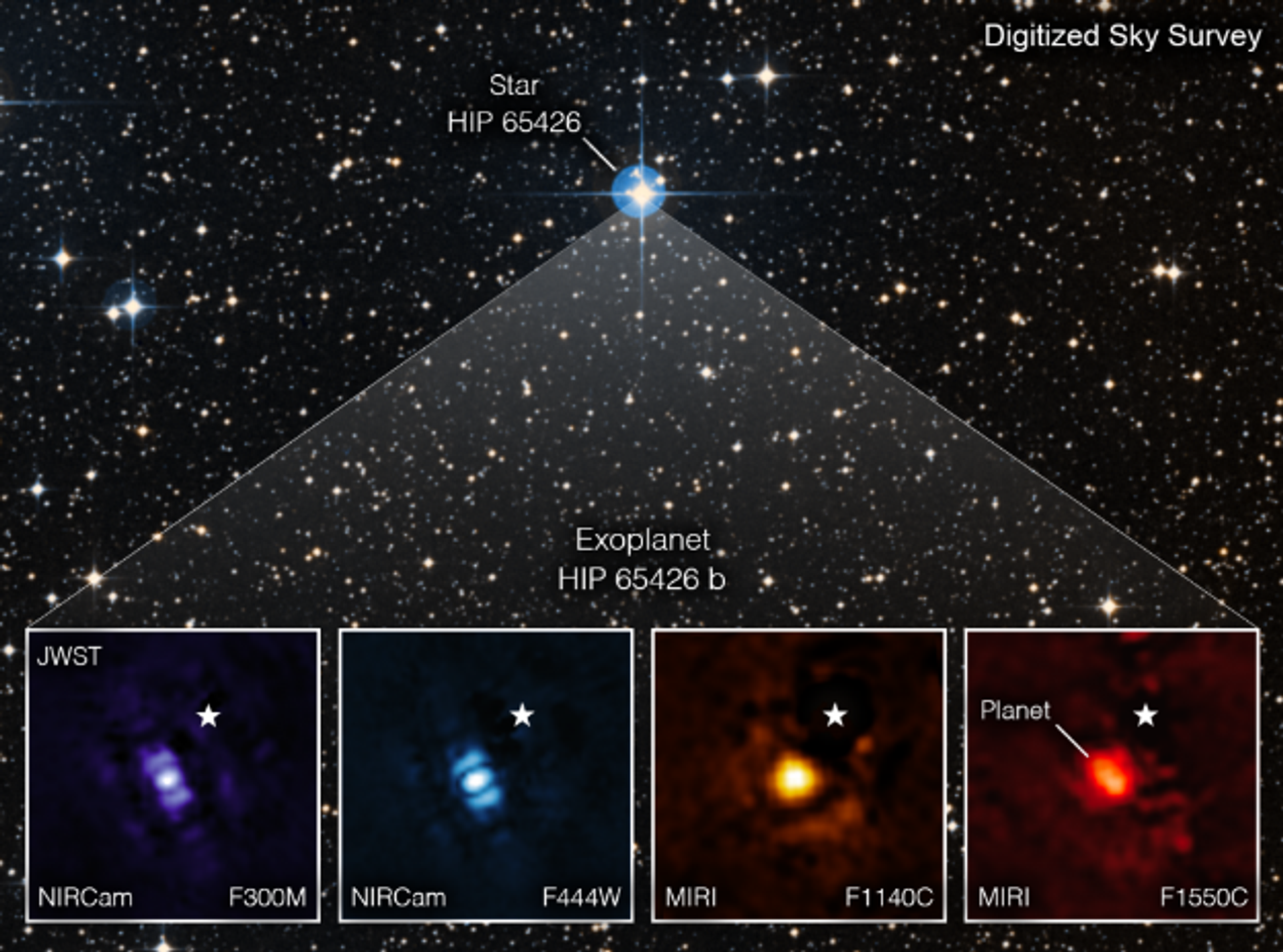NASA: Webb Telescope Takes First Ever Direct Image of Exoplanet Outside Solar System

CC BY 2.0 / ESA/Hubble & NASA /
Subscribe
WASHINGTON (Sputnik) - The James Webb Space Telescope deployed a million miles from Earth has successfully taken the first ever direct image of a planet orbiting another star light years away from the Solar System, NASA announced in a press release on Thursday.
"For the first time, astronomers have used NASA’s James Webb Space Telescope to take a direct image of a planet outside our solar system," the release said. "The exoplanet is a gas giant, meaning it has no rocky surface and could not be habitable."
The massive exoplanet is called HIP 65426 b and it is six-to-twelve times the mass of Jupiter, the release said.
"Astronomers discovered the planet in 2017 using the SPHERE instrument on the European Southern Observatory’s Very Large Telescope in Chile and took images of it using short infrared wavelengths of light. Webb’s view, at longer infrared wavelengths, reveals new details that ground-based telescopes would not be able to detect," the release added.

This image shows the exoplanet HIP 65426 b in different bands of infrared light, as seen from the James Webb Space Telescope: purple shows the NIRCam instrument’s view at 3.00 micrometers, blue shows the NIRCam instrument’s view at 4.44 micrometers, yellow shows the MIRI instrument’s view at 11.4 micrometers, and red shows the MIRI instrument’s view at 15.5 micrometers. These images look different because of the ways the different Webb instruments capture light. A set of masks within each instrument, called a coronagraph, blocks out the host star’s light so that the planet can be seen. The small white star in each image marks the location of the host star HIP 65426, which has been subtracted using the coronagraphs and image processing. The bar shapes in the NIRCam images are artifacts of the telescope’s optics, not objects in the scene.
© Photo : NASA
HIP 65426 b is about 100 times farther from its host star than Earth is from the Sun, according to the release.
